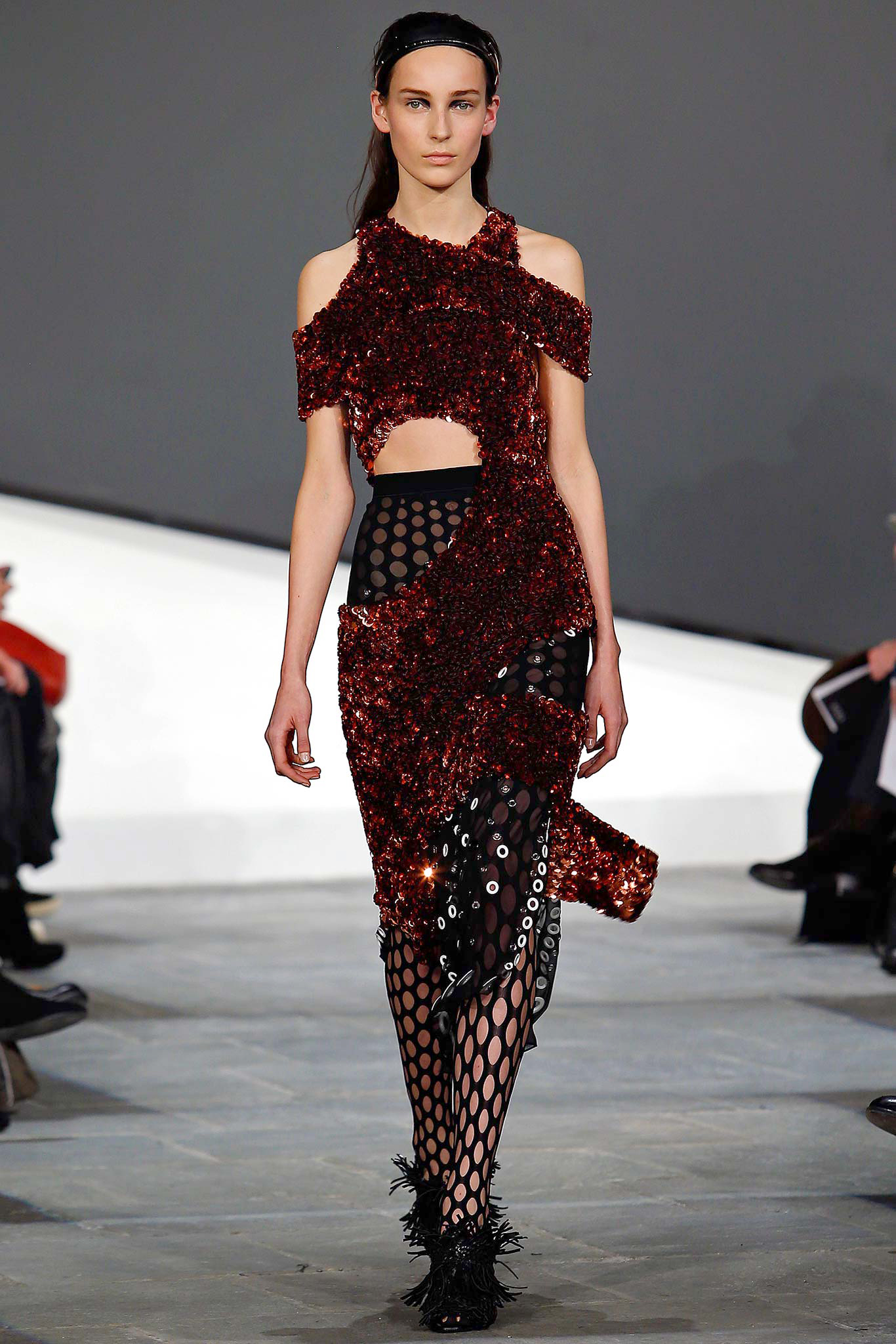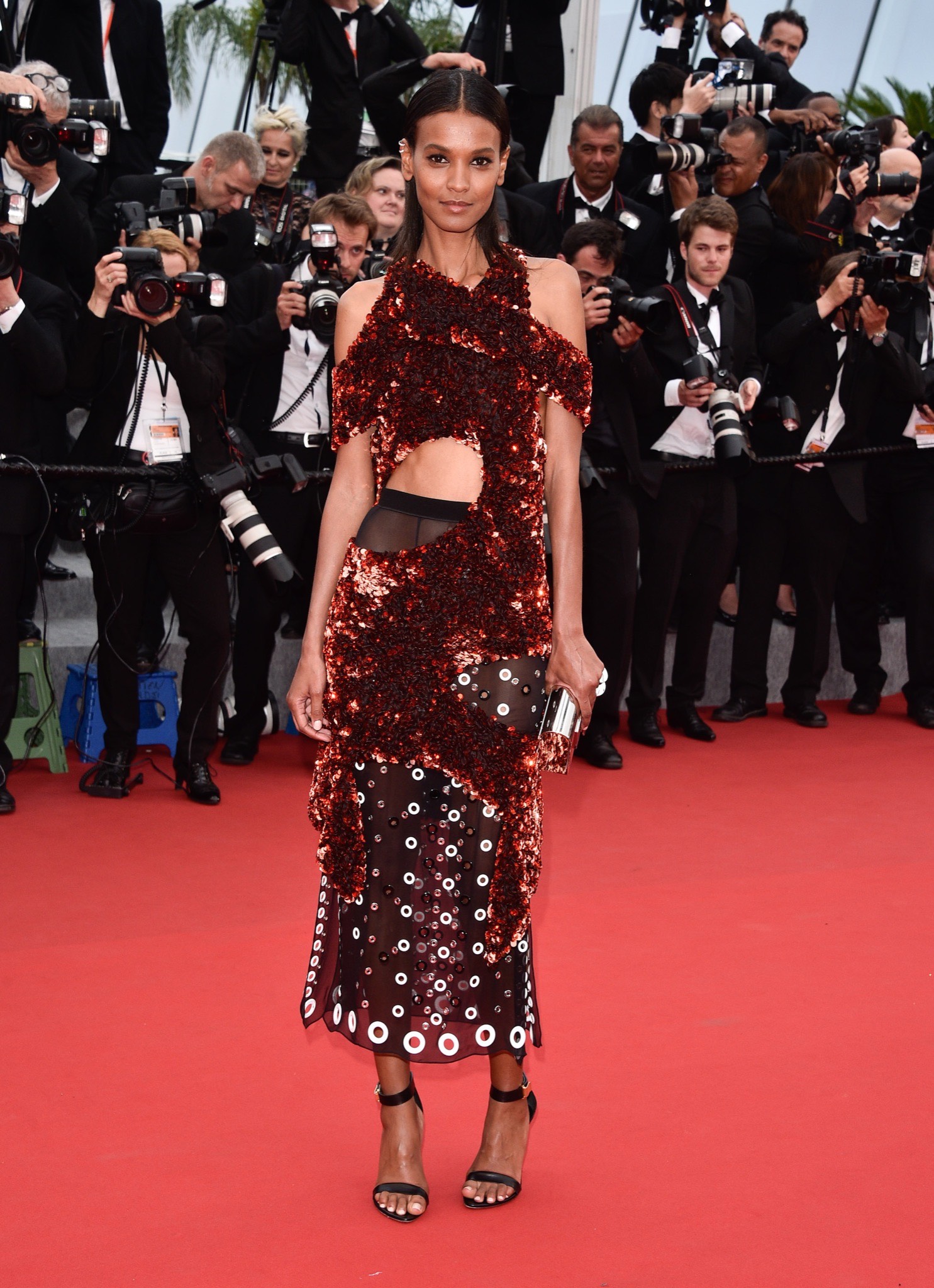Red carpet dresses are anything but innovative but occasionally, someone takes a risk and helps this tried and tested dressing-up formula move forward. Address contributor Jacob Rosengren returns with his series of essays exploring individual dresses from the catwalk by considering the impact of look 43 from Proenza Schouler a/w 2015 collection.

Proenza Schouler a/w 2015, look 43. Source: style.com
Column dresses and ball gowns mostly in black, white, BEIGE or gold, in staple satin, slinky silk or anything with some sheen. Trains for drama, sparkle to make things extra special and hemlines that gracefully stroke the surface below like heavenly sweeping brushes. The red carpet dress design formula is simple and safe.
There are not a lot of designers challenging the idea of what dressing up for premieres and award ceremonies might mean in the 21st century, with the fear of having their creations downgraded to the ‘worst dress lists’ or loosing celebrity clients. As a result, this garb genre is marked by safety and sadness as stars hold on to dated notions of glamour stretching back to the 1920’s. This ‘no-risk’ approach means that designing for the red carpet is all about a balancing act of covering and revealing. If the arms are on show, legs will be hidden. If the back is exposed, then everything else will be fully covered up (great for those derriere shots with the cheeky, over the shoulder, glances). No slits and tits simultaneously: that’s slutty.
It seems that most actresses still aspire for the Disney princess look with their safe choices, something that press hungry designers are all too willing to cater for. The recent Cannes film festival display of designer dresses was no different, except, that is, for look 43 from Proenza Schouler a/w 2015 collection that made an appearance on model Liya Kebede for the Max Max: Fury Road premiere. Not strictly a red carpet candidate, the dress defies all the norms of what is expected from a piece of cloth for an event like this.

Liya Kebede wearing look 43 from Proenza Schouler a/w 2015 collection. Source: style.com
The outfit comes in two separate, and oddly different, parts that rely on each other for overall impact. The upper layer consists of densely embroidered copper sequin straps that envelop the body in asymmetric strides. Not a top or a dress, this odd creature is a touch tinselly but its irreverence adds humour and provocation, but, equally, also allure to the look. Underneath is an eyeleted black chiffon underskirt. The purpose is not to cover but to adorn – otherwise, why would you choose sheer fabric and further exposure by punctuating it with metal-lined holes? The strict lines of the skirt, both in the arrangement of the eyelets and the horizontal borders that make up the hem and the waist, are in stark contrast to the irregularity of the sparkly number that lies on top.
Together, the result is anything but a traditional red carpet dress. The asymmetric cut laughs at harmonious old beauty ideals. The skirt waist peeking though the midriff cut-out, appears accidental but has punk attitude, like it is giving a middle finger to the bland ethereal creatures that otherwise occupy these premieres. The look is body-hugging but not body-conscious: designed, not decorated. It incorporates a number of features that work towards revealing the body underneath: the cut-outs in the top layer, sheer chiffon and eyelets all show, but, importantly, don’t tell. It is this juxtaposing mystery that gives the look a modern attitude. It’s a pity that the graphic fishnets that were included on the catwalk with this outfit are missing, with their added optics.
Jack McCollough and Lazaro Hernandez, the designers behind the New York-based Proenza Schouler label, and who created this outfit, are approaching femininity from a perspective that is challenging even when it extends to spaces where tradition and safety rule, such as the red carpet. Their idea of dress is forward thinking and has real design integrity that asks you to consider what fabrics and seams combined might mean when it comes to adorning the body. Nowhere else do we need more of this innovation than on the claret catwalk that occupies such a pivotal role in adding to the dialogues around dress and appearance. With so much global impact and importance, not just for the film but fashion as well, why is it that red carpet dresses are in general so weak?

